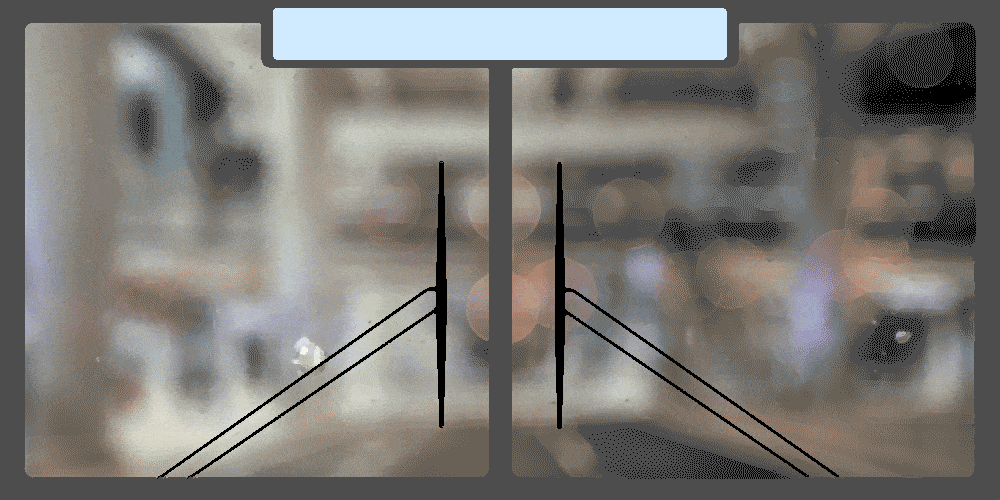Our conversation started with the weather as most do. The bus driver commented on the rain. It was drizzling and gloomy and very un-Phoenix-like he assured me. I asked him about the aquifer level. It was at grim levels I had heard. He confirmed what I had heard but focused on the rain. It was a welcome, albeit insufficient, relief. He found the positive within the darkness.
I watched him drive out of the corner of my eye. He wore a lanky frame that looked strong at some point in the past. He hadn’t shaven for a few days, but not in a chic way. He must have slept in his Carhart jeans and flannel the night before by the look of the deep-set wrinkles. His name was Frank. His eyes sagged.
His left hand grabbed the microphone: “Good afternoon, folks, and welcome to Phoenix. It’s about a 14-minute ride from the Phoenix International Airport. This is the last bus to the Sky Harbor Rental Car Center for today.”

I could tell from his robotic gestures he had driven this route so often he could have done it in his sleep. Left turn from the second turn lane. Left blinker off. Right blinker on. Check mirror for oncoming traffic. Clear. Proceed to right-hand turn.
I stood on the yellow line, careful not to cross — although his worn-out demeanor told me he wouldn’t care. I felt as tired as Frank looked. I wasn’t looking forward to renting a car, an act that seemed as outdated as sending a fax or leaving voicemails. The process of renting a car is optimized for pain. I am convinced that the clerk must reboot a refurbished Dell computer running Windows XP after each customer. Why else do you have to stare at the screen for 15 minutes before I decline an upgrade to a mid-compact? I toed the yellow line at the bus’s front so I could make it to the counter before anyone else.
“Where ya from?” Frank asked, unfazed with my head buried in my phone. I realized he mistook my standing at the front as an invitation to converse. I gave a matter of fact reply and returned to my mindless scrolling. Frank didn’t seem to care. We settled into a few minutes of silence while Frank effortlessly navigated the road.
“I saw a driverless car over here the other day,” he started up again, pointing to the intersection. I perked up. I was interested in this. Self-driving cars were the final nail in the coffin of the rental car companies. I could be rid of this whole nightmarish experience, I thought. I put my phone away.
“Is Phoenix a popular place to test driverless cars?” I asked. “Yeah. It must be because of the straight and wide streets,” Frank replied. Unlike LA and San Francisco, where most self- driving technologies were being developed, there was nothing organic about this city’s development. It was very planned and very organized.
“What do locals think about it?” I asked. He pointed out that not all locals welcomed it. He told me about an incident where a driverless car hit a pedestrian crossing the street. It was a minor accident, no significant injuries. The pedestrian was at fault. She ignored the crosswalk light. She still sued, and the papers wrote sensationalized headlines.
We’ve all read the anxiety-inducing stories of automation. It’s hard to have a conversation about the topic without it veering off into a dystopian or utopian ending. Reality is more nuanced.
To my surprise, Frank sided with the tech company. “It could’ve been worse if it was a human driver,” he said. It was a good point. Many times, the debate over the dangers of self- driving cars has nothing to do with the data. There is no question that driverless vehicles are safer. An estimated 36,120 people died in vehicle-related accidents in 2019 in the U.S., according to the National Highway Traffic Safety Administration. This was reported as welcome news as it was about a 3% decrease in fatalities.
One day, we’ll look back at the era of human driving as barbaric: humans hurling two-ton metal cages down a narrow stretch of asphalt, mere inches away from each other, while scarfing down sandwiches and flipping through radio stations. It’s utter madness. The resistance against driverless technology will come across as silly as the first arguments against electricity. But if the opposition to automation is irrational, it is nevertheless understandable. Humans are just more comfortable being maimed and killed by other humans rather than robots. Automation introduces an unsettling new experience: tragedy absent of emotion.
The woman hit by the driverless car wasn’t injured. But she had no driver to cuss out. She picked herself up and stared at an empty vehicle. It just idled patiently, waiting for her to gather the contents of her purse and get off the street. There was no catharsis for the aggrieved. So she screamed. She raged. And then she sued.
We’re facing an onslaught of automation across all industries. We know the consequences, and we know what we have to do: retrain, adapt, and evolve. Yet, very few people are actually doing that. Instead, we’re standing in front of the idling robot and screaming.
Our unsettling relationship with automation is only beginning. There’s no grace in being the woman screaming at the car or the rental car company refusing to innovate. Neither is there grace in telling the victims of automation to get a new job. This is more than a story about exponential efficiency. Automation is a story about identity. With every job replaced by automation, there is a myriad of human interactions lost that shaped who we’ve become. What happens to the human psyche when technology rids us of every friction point in our lives? I don’t want to learn patience while the clerk stairs at the computer for 15 minutes. I want rental car companies to die.
The debate over automation has taken a detrimental binary tone. It’s either dystopian or utopian, screams or silence. There are concise cases to be made about the societal benefits of automation. Still, we lack the poignant examples for our souls. Technology is a uniquely human feature, and the single factor propelling our species to total and complete domination. It’s been our superpower, but it may become our kryptonite if we refuse to evolve, either through screams or silence.

If there was any victim in this story, it was Frank, not the woman hit by a robotic car. He was a blue-collar guy, the one we most associate with the victims of automation. He was a man who had been around and worked many different jobs and dealt with many different people.
Friction was a defining feature of his life, and it showed.
But Frank isn’t the victim in this story because he’s going to be losing his job. Unlike the entitled woman ignoring safety signals, Frank’s reaction was measured. Frank was smart. He knew technology. Frank was rational and understood the folly of the woman’s rage. He knew he needed to retrain, adapt, and evolve. But for some unspoken reason, he was still driving a bus. Frank’s voice should be the one we elevate to escape the binary debate. Unfortunately, the woman’s hollowed cries have drowned him out.
Frank turned into the rental car facility and pointed to a construction project on the left. A mountainous structure of steel and concrete towered over the bus station. Men welded tracks while others wired electrical boxes. “They’re building an automated tram,” he said. No more bus drivers was what he meant. We pulled up to the curb as another human-guided Frank into his spot. He didn’t need to look at his colleague. He’d done it thousands of times. Franks’s movements were robotic.
The bus hissed and settled down, and Frank’s bony shoulders slouched over the wheel in sync with the lowering suspension, as if they were one and the same. Frank sighed and the door swung open. I never asked Frank why he still drove a bus. It wasn’t my place. So the unspoken reason remains a tragedy absent of emotion. I wished him good luck. He half-waved at me as I hustled off to beat the crowd. His focus was elsewhere. Stoic, he watched men in hard hats laughing as they hauled rebar to the tram. •
This post uses the following photograph from Gerrie van der Walt courtesy of Unsplash.




